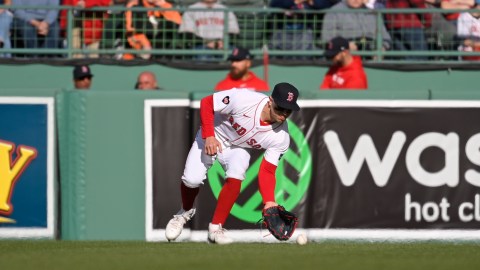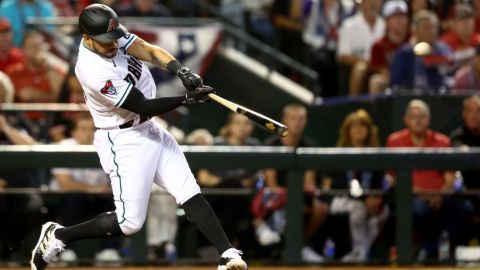 Jon Lester‘s third spring training start made his first two look like works of art. But while Wednesday’s outing against the Pirates wasn’t without flaws, the left-hander should at least be able to benefit from the difficulties he encountered.
Jon Lester‘s third spring training start made his first two look like works of art. But while Wednesday’s outing against the Pirates wasn’t without flaws, the left-hander should at least be able to benefit from the difficulties he encountered.
Lester entered Wednesday’s game on the heels of two scoreless performances. In his first start of the spring, Lester was perfect. He didn’t allow a baserunner in two innings against the Cardinals, and he picked up the win while striking out one. In his second start, Lester was nearly perfect. He gave up a hit and walked one, but he struck out two and secured another win in three innings of work.
When Lester punched out for the day on Wednesday, his stat line wasn’t quite as immaculate. He allowed a run, gave up two hits and walked three in four innings. He briefly struggled with his command, and the results may have been worse had he not been able to escape a bases-loaded jam in the second inning.
Fortunately for Lester, he was able to come away from that second frame unscathed, and it led to better results in the remaining two innings. Aside from that three-batter stretch in the second — during which Brandon Inge singled, and both Michael McKenry and Clint Barmes walked — the overall product wasn’t as bad as it seems when stacked up against the previous two displays.
The biggest takeaway for the Red Sox in terms of Lester’s performance on Wednesday shouldn’t be his brief moments of ineffectiveness. It should instead be his ability to bear down with runners on base.
Lester’s left-on-base percentage — which measures the percentage of baserunners that a pitcher strands on base over the course of a season — was a career-worst 67.6 percent in 2012. That’s a below-average mark for a major league starter, and it was a big dip from the career-best 78.1-percent mark that Lester posted in 2011. Obviously, a number of factors (including the number of total baserunners) come in to play when discussing the percentage of runners a pitcher strands, but last season’s figure seems to indicate that Lester had a tendency to let things snowball a bit after the first sign of trouble.
A big reason for Lester’s inability to escape jams in 2012 was his strikeouts. Lester’s strikeout total (166), strikeouts per nine innings (7.28) and strikeout percentage (19 percent) were all the lowest they’ve been since 2008, and it clearly hurt the left-hander. The hope is that by reverting back to the mechanics that made him so successful from 2009 to 2011, Lester will once again get batters to swing and miss, and thus reestablish himself as one of the more reliable starters in baseball.
Wednesday’s start showed that there are still some kinks to be worked out, but it also gave Lester an opportunity to work with runners on base — something he didn’t get to do too much in his first two starts. All of this may seem like slapping lipstick on a pig, but Lester’s performance can hardly be considered a pig, especially in a game that included disappointment regarding Steven Wright‘s ineffectiveness and Rubby De La Rosa‘s descent back down to earth.
Anyone who occasionally catches one of TV’s seemingly 700 showings a month of The Replacements might remember Shane Falco’s awe-inspiring speech about his fear of quicksand, which is the inability to rebound after things start to go wrong. Lester spent much of his 2012 season up to his knees in quicksand, so the lefty’s ability to jump right out of the trap on Wednesday was a step toward more stable ground.
Have a question for Ricky Doyle? Send it to him via Twitter at @TheRickyDoyle or send it here.



